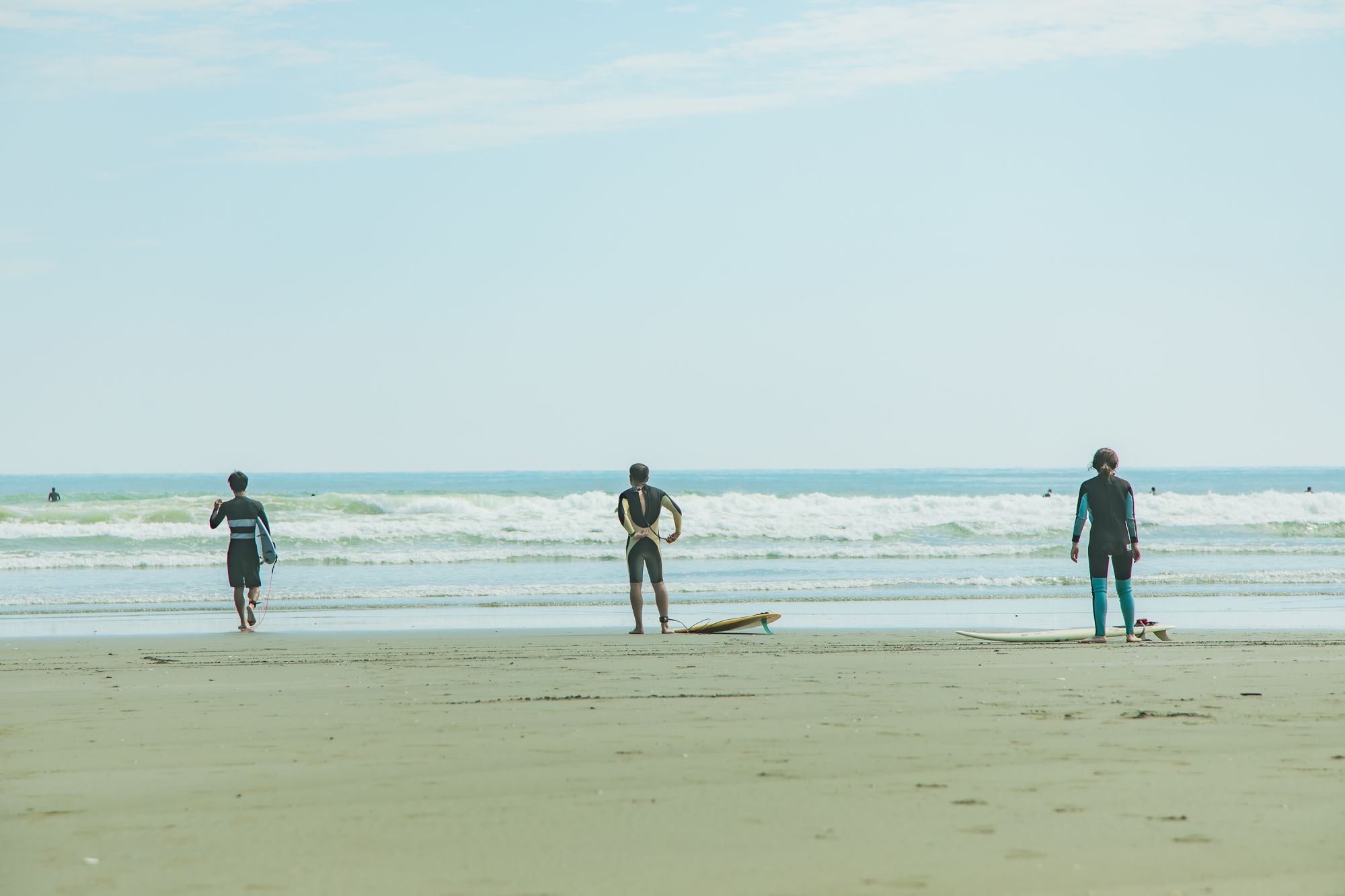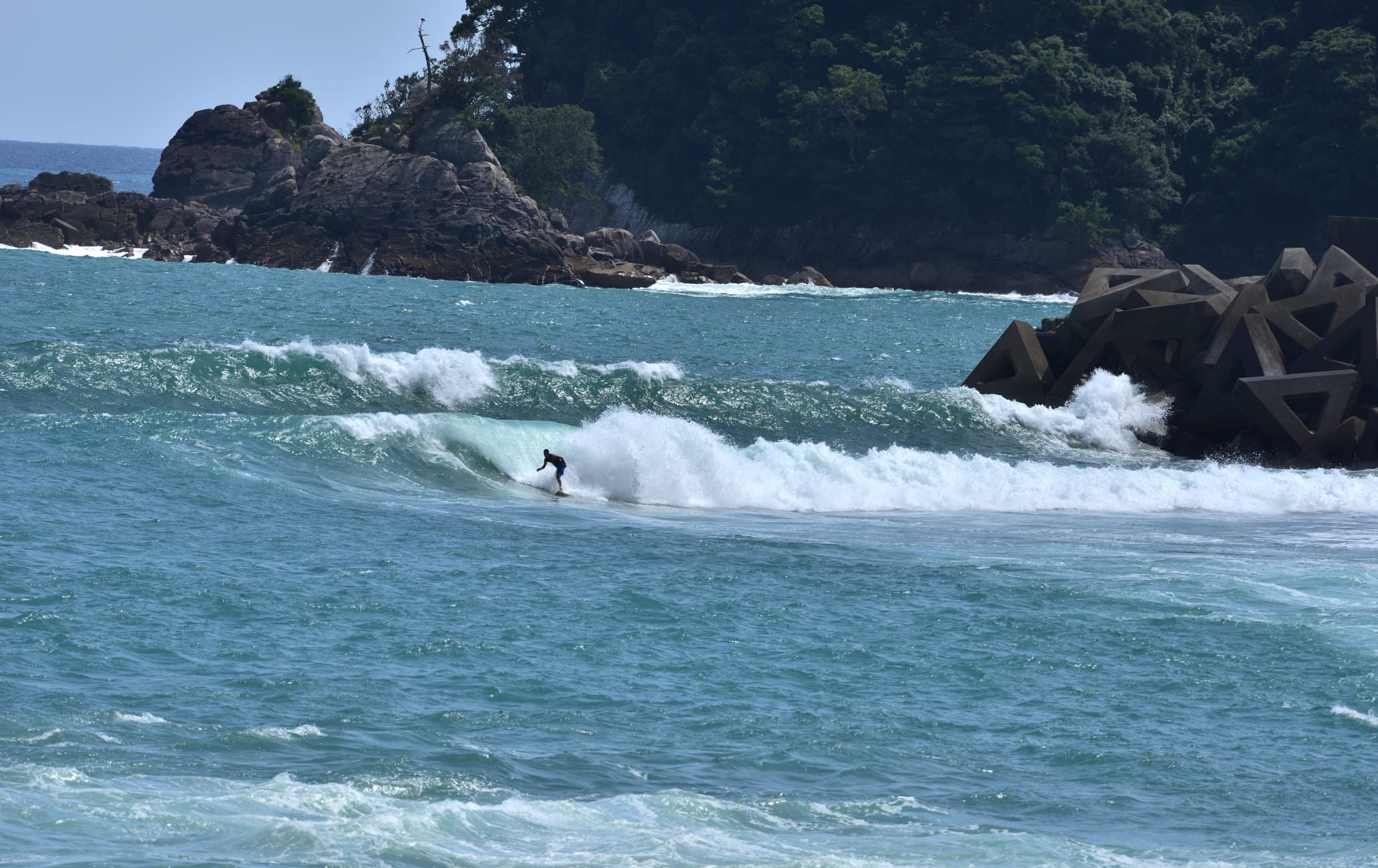Shikoku, a Lesser-Known Surfing Spot
With its rivers that flow out into the sea, this island sees world-class waves form from June to November every year.

© JNTO
In the collective imagination, the USA and Australia are the best surfing destinations in the world. However, Japan has what it takes to rival them. One of the country’s most rural islands, Shikoku, situated between the Seto Inland Sea and the Pacific Ocean, brings together all the qualities required to offer an incomparable surfing experience. Hills covered in dense vegetation that falls into the ocean, warm, crystalline water (with an average temperature of 23°C), expansive sandy beaches that run alongside the road… This wild haven seems far removed from the hustle and bustle of Tokyo.
During the typhoon season, from June until November, world-class rivermouth waves form, delighting enthusiasts of all levels of experience. This is due to the presence of numerous rivers that are fed by heavy rainfall. When these waterways flow out into the sea, they form sandbanks against which the swells (undulating motions on the surface of the water) created by the tropical cyclone break to form waves. Thus, there are at least twenty swells each season. They are unpredictable, lasting hours or several days.
Kaifu, the ‘Japanese Pipeline’
At the eastern tip of Shikoku Island lies Tokushima prefecture. Considered by many to be the unmissable surfing spot in Japan, this mountainous region with numerous beach breaks (a beach where the waves break on a sandy seabed) which are magnets for swells. In addition, at the mouth of the Kaifu River is where the wave that goes by the same name is found, known for being the best in the country.
It is nicknamed the ‘Japanese Pipeline’ by the locals, in reference to the famous ‘Banzai Pipeline’ in Hawaii, a place that’s as dangerous as it is sought-after. However, rights of access to the wave in Japan are reserved for experienced surfers. Despite its exceptional quality during the typhoon period, the conditions are hazardous. Indeed, with the lack of depth and the current created by the river, less experienced surfers risk getting into difficulties. Furthermore, according to those familiar with it, the Kaifu wave is described as temperamental. This natural phenomenon was filmed by surfer Yoav Naccache for Streamer.
More information can be found on the Japan National Tourist Organisation’s website.

© JNTO
TRENDING
-
The Tattoos that Marked the Criminals of the Edo Period
Traditional tattoos were strong signifiers; murderers had head tattoos, while theft might result in an arm tattoo.

-
Paris, Tokyo: Robert Compagnon
With his co-chef and talented wife, Jessica Yang, Robert Compagnon opened one of the top new restaurants in Paris: Le Rigmarole.
 3:31
3:31 -
Chiharu Shiota, Red Threads of the Soul
Last year, more than 660,000 people visited the retrospective 'Chiharu Shiota: The Soul Trembles' exhibit at the Mori Art Museum.

-
‘Before Doubting Others, Doubt Yourself. Who Can Truly Say a Dish Isn’t What It Used to Be?’
In ‘A Non-Conformist’s Guide to Surviving Society’, author Satoshi Ogawa shares his strategies for navigating everyday life.

-
The Story of Sada Yacco, the Geisha who Bewitched Europe
Described by Dazed magazine as the first beauty influencer, she has been restored to her former glory since 2019.





